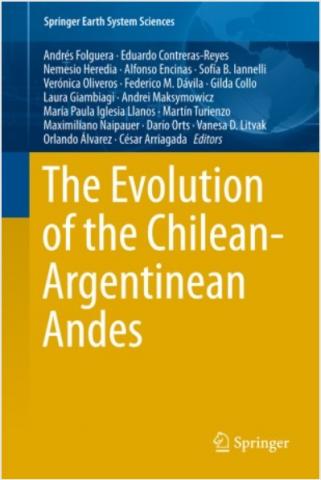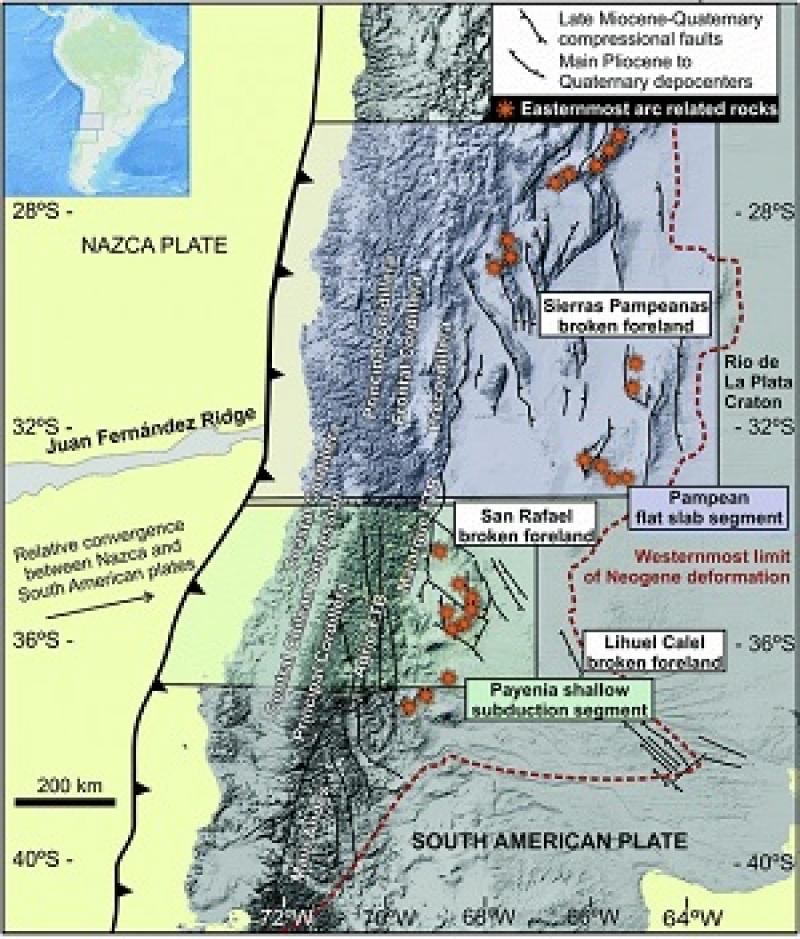Libro: The Evolution of the Chilean-Argentinean Andes

Capítulo: The Late Paleogene to Neogene Volcanic Arc in the Southern Central Andes (28°–37° S)
Autores: Vanesa D. Litvak, Stella Poma, Rosemary E. Jones, Lucía Fernández Paz, Sofía B. Iannelli, Mauro Spagnuolo, Linda A. Kirstein, Andrés Folguera, Victor A. Ramos
pp 503-536
Abstract: Evolution of arc magmatism along the Southern Central Andes (~28°–37° S) is strongly controlled by changes in the geometry of the downgoing slab (e.g., slab dip angle). This is particularly evident in the present-day Chilean-Pampean flat-slab and the late Miocene Payenia shallow subduction segments. Typical Andean-type volcanism was established from the late Oligocene to late Miocene in the high Andes (29°30″–30°30″S), with arc-related calc-alkaline volcanism having geochemical signatures that reflect changes in the residual mineral assemblages related to increased crustal thickness (>50 km). The increase in crustal thickness resulted from increased compression along the Southern Central Andean margin due to the subduction of the Juan Fernández Ridge, and consequent shallowing of the downgoing slab during Mid to Late Miocene. Associated with the decrease in the slab dip angle, the volcanic front migrated to the east. Further south, magmas developed across the present-day Payenia back-arc region (35°–37° S) show an increase in slab-derived components in the middle Miocene to early Pliocene times, which also suggests a progressive shallowing of the subducting slab at these latitudes. However, trace element ratios indicate a low-to-intermediate pressure residual mineral assemblage and no significant increase in crustal thickness is apparent, unlike further north in the Chilean-Pampean flat-slab segment. Although flat-slab geometry still prevails in this latter segment, re-steepening of the slab during early Pliocene times (~5–3 Ma) promoted an increase of arc and back-arc magmatism at these more southerly latitudes of the Southern Central Andes. A dynamic link between slab geometry, geochemistry, and volcanic activity is therefore observed in the Southern Central Andes.

